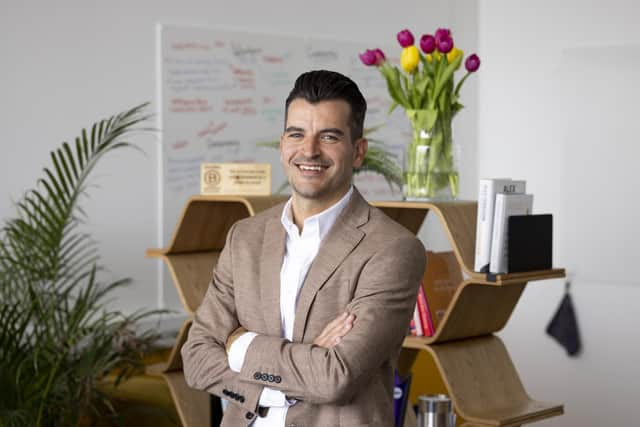Connect Three founder Colin Lamb outlines key levers business leaders can pull to navigate change and thrive in 2024
I’ve heard Canadian PM Justin Trudeau’s famous quote that “the pace of change has never been this fast, yet it will never be this slow again” uttered by business leaders regularly recently – and that’s because it's now far more pertinent.
Looking ahead, I believe 2024 is going to be another challenging year for business. Just when we thought we were out of the woods following Covid, rising interest rates and the cost-of-living crisis are now continually challenging firms, meaning they must rethink what, how, and why they do what they do.
Advertisement
Hide AdAdvertisement
Hide AdThese external factors will drive businesses to change, adapt, and evolve quicker than we realise. Many businesses have already had to pivot during the pandemic, and start to think differently to survive in a changing world. Disruption is well under way, and the successful leaders will be at the forefront of it, while those who do not prioritise it will be left behind.


What, therefore, does this mean for business strategy and leadership in 2024? Here’s our deep dive into four areas of focus to navigate the change in 2024.
Humanising the workplace
We will see a shift towards purpose, wellbeing, and fulfilment in the workplace. The working day is no longer about nine to five, head down, and clock out, and is instead an important part of people’s lives – so they will make a choice to work somewhere that aligns with their values, contribution, and sense of purpose. Successful workplaces will foster connection, inclusion, collaboration, as well as employee voice, and create structures and environments for people to be at their best.
We are seeing far more informal “rules” and work practices being introduced, helping people feel more comfortable being themselves rather than trying to be someone they are not. This authenticity is important – especially in leaders who should be role-modelling vulnerability, inclusion, adapting personal styles to best suit the person, prioritising wellbeing, being transparent, holding others to account on performance, distributing decision-making authority, and rewarding innovation and diversity of thought.


Hybrid and flexible working will level up
We all know building trust, rapport, and relationships is much easier in person, as it’s what we always did, but the best businesses are now rethinking how we do this going forward to attract and retain diverse talent from a larger pond. Flexibility – real flexibility, not flexible working requests – is slowly becoming a hygiene factor. This is now an expectation, so people can manage life around work, not plan work around their lives. This does pose challenges, especially for more traditional and industrial workplaces, however if considered and implemented as part of a cultural change, can be very effective to improve trust, and increase autonomy and responsibility, resulting in increased productivity.
Enabling an innovation culture
Innovation is a theoretical juggernaut, spoken about by business leaders at town hall meetings and annual strategy days to inspire and motivate people, but rarely translating into meaningful practice. To reverse that, leaders need to role-model innovation and challenge teams to think about how things can be better, faster, and different, to achieve optimal performance. They need to buck the ingrained production line practices revolutionised by Henry Ford a century ago, and create a modern workplace where "thinking how things could be better” is valued above “doing it how it’s always been done”.
Creativity and innovation are staples of the entrepreneurial world where businesses work with far less to produce great results. This is the type of environment and culture we need to implement in an organisation for them to change their ways and to truly put innovation into practice. The "fail fast” mindset – where failures are identified and addressed at the earliest opportunity – needs to be role-modelled by leaders to create the psychological safety for others to put their head above the parapet and try something new without fear.
Re-work operating models to enable agility and a “future-fit” organisation
Advertisement
Hide AdAdvertisement
Hide AdDuplication in different areas of the business; complex processes and sign-offs; long waiting times and processes for decision-making; and silo working are issues we’re seeing now almost more than ever before. Organisations need to disrupt operating models and rework internal hierarchies to enable agile working, faster decision-making, and empower autonomous teams.
Operating models evolve as businesses expand, and require more resources and structures to deliver further growth. I’m sure all leaders would design the operating model of their business differently if they could start again knowing what they know now. Some of the challenges lie not in the structures but in people, with leadership capacity resistant to change and collaboration – especially if they are remunerated on one aspect or part of the business as opposed to the whole thing.
The key to enabling a future-fit operating model is to consider cross-functional collaborators; resource-sharing and role agility; business partnering modelling; automated data availability; whole team remuneration plans; and a customer-centric approach with everything boiling down to how the organisation can improve customer experience.
Comments
Want to join the conversation? Please or to comment on this article.